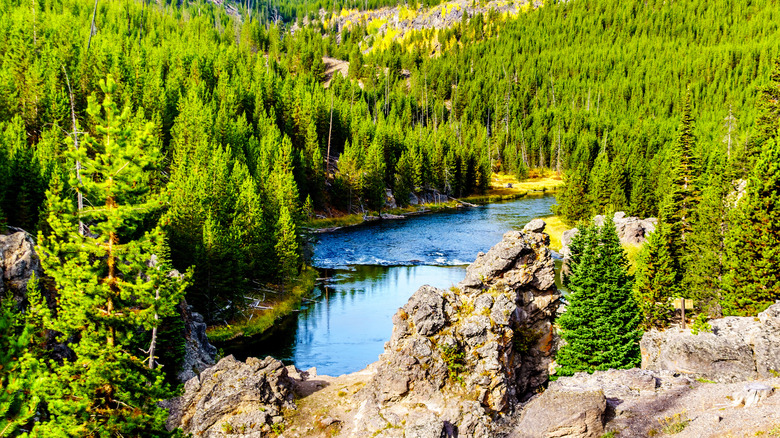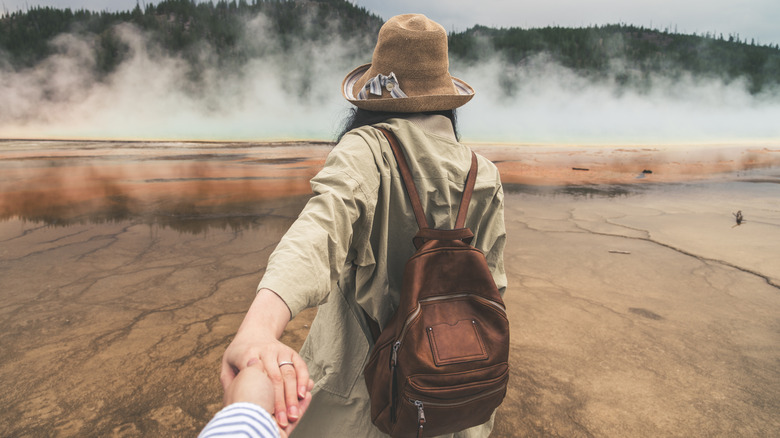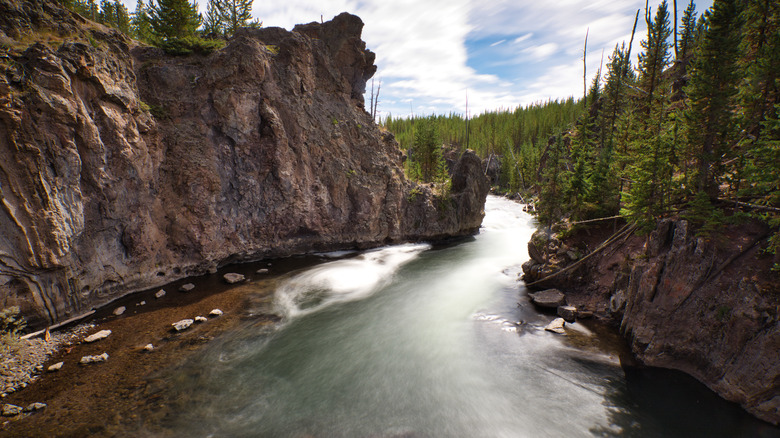This Popular National Park Is Home To One Of The Best Swimming Holes In The US
Yellowstone National Park is renowned for many reasons, but few of them have to do with swimming. In fact, much of the water throughout the park is incredibly dangerous for swimmers. The park is famous for its many geothermal hot springs, but don't try to take a dip! Temperatures can reach up to 345 degrees Fahrenheit. In the high-altitude lakes and rivers, water temperatures remain ice-cold throughout most of the year, and you risk hypothermia even in the summer. Needless to say, swimming isn't recommended throughout most of the park, and in many areas, it is strictly forbidden.
Yet, summer is one of the best times of year to visit Yellowstone National Park. And if you're lucky enough to visit during the warmest months and are looking for a refreshing swim, hope is far from lost. Nestled within the cliffs along the Firehole River, you'll find an incredible swimming hole where water temperatures have been described as feeling like you're soaking in a bathtub — and the views are amazing. You can explore the rocky beach, splash in the water, and swim through a small scenic canyon. It's the perfect place to relax and cool off after exploring Yellowstone's epic landscape, and one of the best activities if you're visiting Yellowstone National Park on a budget.
Yellowstone National Park's epic beauty and extreme conditions
Yellowstone National Park is known for its various bodies of water, which include epic geysers, steamy hot springs, and breathtakingly beautiful lakes. The landscape has been evolving for over 150 million years due to factors like volcanic eruptions, glaciers, earthquakes, and hydrothermal activity, resulting in one of the most iconic outdoor destinations in the United States.
Yellowstone was officially enacted on March 1, 1872, by President Ulysses S. Grant, making it America's first national park and effectively protecting the beautiful landscape for future generations. The park encompasses 3,500 square miles of rugged wild land and spans three states. Wyoming claims most of Yellowstone's land, but parts of the park are also located in Idaho and Montana.
In addition to world-famous sites like the beloved geyser Old Faithful, you'll find thriving forests, canyons, rugged mountains, and raging rivers. The landscape is wild and unpredictable, so it can be dangerous if you aren't careful. While it may feel tempting to swim in the wilderness, it's best to stick to designated swim areas like the one in Firehole River and follow all rules and regulations.
Things to keep in mind when visiting Firehole Swim Area
When planning your excursion to Firehole Canyon Swim Area, remember that you'll swim at your own risk. There are no lifeguards on duty, so you must check the river conditions to avoid swimming when water levels are high and unsafe before you go and follow all of the rules and regulations. Avoid climbing on or jumping off of the rocky cliffs as it is both dangerous and against the rules.
The swim area is only open for a few months out of the year, usually from the middle of the summer until autumn when the weather is warmest, and flooding from spring snowmelt has dissipated. On years with extra snowfall, it might be deemed unsafe to swim for the duration of the year. Swimming is permitted between 8 a.m. and 6 p.m. daily throughout the season.
Firehole Swim Area is located near Madison Junction along the beautifully scenic Firehole Canyon Drive. When you arrive, you won't see any parking area, but you will see a few signs pointing you toward the swimming beach. Parking on the shoulder of the road is permitted, and changing areas and bathrooms are nearby.


